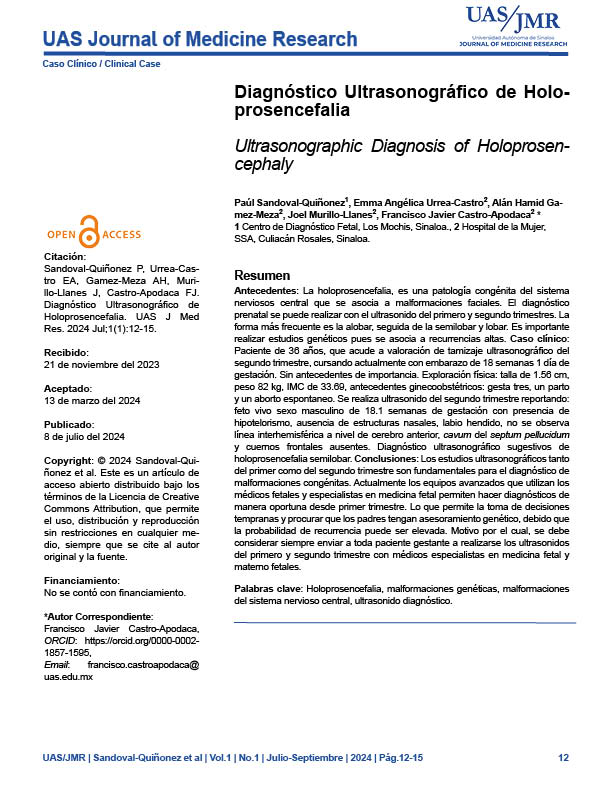Ultrasonographic Diagnosis of Holoprosencephaly
Keywords:
Holoprosencephaly, genetic malformations, central nervous system malformations, diagnostic ultrasoundAbstract
Background: Holoprosencephaly is a congenital pathology of the central nervous system that is associated with facial malformations. Prenatal diagnosis can be made with ultrasound in the first and second trimesters. The most common form is the alobar, followed by the semilobar and lobar. It is important to perform genetic studies as it is associated with high recurrences. Clinical case: 36-year-old patient, who comes for ultrasound screening evaluation of the second trimester, currently pregnant at 18 weeks and 1 day of gestation. No significant history. Physical examination: height 1.56 cm, weight 82 kg, BMI 33.69, gynecological-obstetric: history of pregnancy 3, 1 birth and one spontaneous abortion. An ultrasound of the second trimester was performed, reporting: a live male fetus of 18.1 weeks of gestation with the presence of hypotelorism, absence of nasal structures, cleft lip, no interhemispheric line observed at the level of the forebrain, cavum of the septum pellucidum and absent frontal horns. Ultrasonographic diagnosis suggestive of semilobar holoprosencephaly. Conclusions: Ultrasonographic studies of both the first and second trimester are essential for the diagnosis of congenital malformations. Currently, the advanced equipment used by fetal doctors and fetal medicine specialists allows diagnoses to be made in a timely manner from the first trimester. This allows early decision-making and ensures that parents have a genetic diagnosis, because the probability of recurrence can be high. For this reason, it should always be considered to send all pregnant patients to have first and second trimester ultrasounds performed by doctors specializing in fetal and maternal-fetal medicine.
Downloads

Downloads
Published
Issue
Section
License
Copyright (c) 2024 UAS Journal of Medicine Research

This work is licensed under a Creative Commons Attribution-NoDerivatives 4.0 International License.

